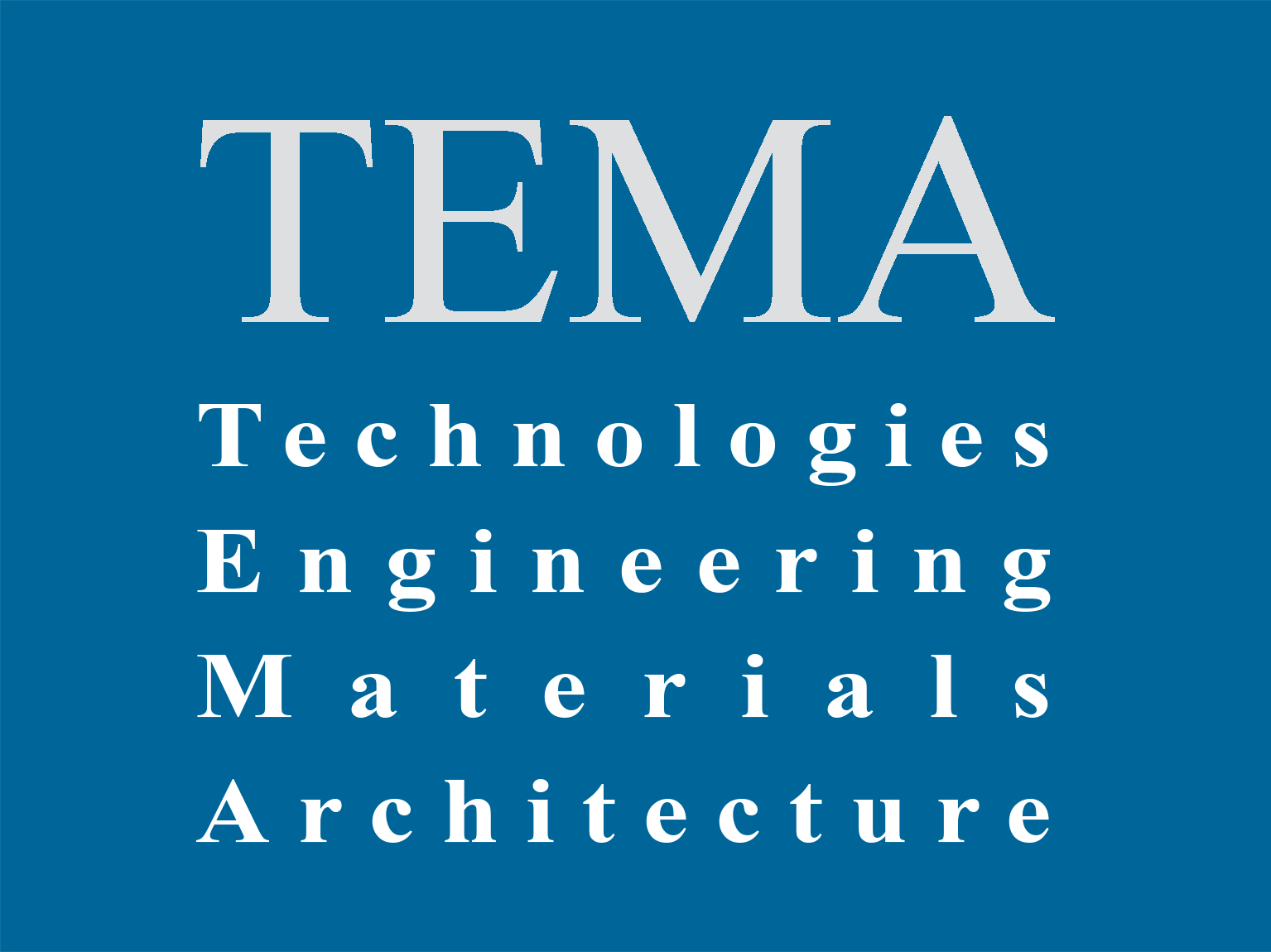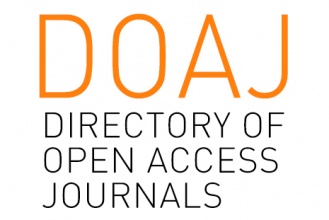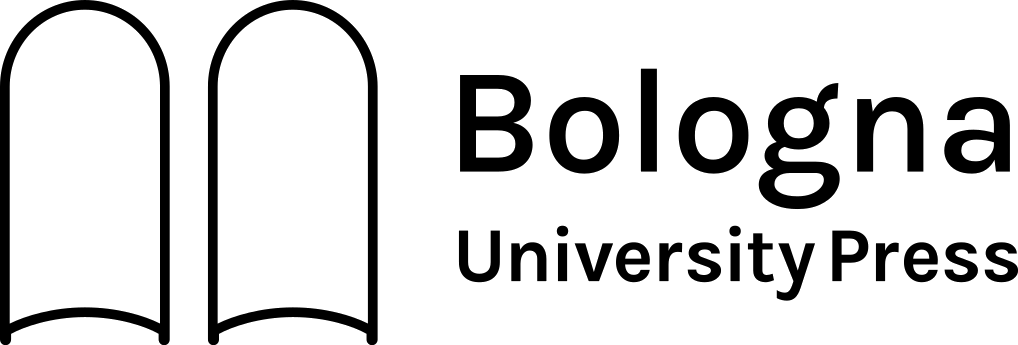TEMA Journal is committed to publishing articles in the issue immediately after their acceptance through the double-blind review phase, in the form of a Just Accepted Article. This method, already practiced by numerous scientific journals, provides an additional and free service for Authors as well as the entire scientific community, as it significantly accelerates the dissemination of contributions with a fully citable DOI (Digital Object Identifier) compared to the longer publication times of complete issues.
To this end, following the Authors’ explicit request, the Editorial Board populates the Just Accepted page with the accepted articles that have successfully passed the review process.
Just Accepted articles are published, as received by the Author or in a pre-print version, in the form of PDF documents.
Each Just Accepted Article features a header, names of the authors, an abstract, and a Digital Object Identifier (DOI), with the watermark “Just Accepted” visible on each page. The DOI will also remain unchanged for the article published in the final issue.
Since they are not included in the final version, Just Accepted articles are removed from the TEMA Journal website at the time of the online publication of the definitive article.
After being published as Just Accepted, the article follows the standard production process (editorial revision, proofreading of the English language, layout, revision of the layout draft, online publication, and revision before printing of the issue).
ARTICLES JUST ACCEPTED
A Philological Digital Platform to Experimental Preservation: Upcycling The Prefabricated School Buildings Heritage
Ilaria Giannetti1, Fabiano Micocci2, and Angelo Bertolazzi3
1 – Department of Civil Engineering and Computer Science Engineering, University of Rome Tor Vergata
2 – Department of Architecture, University of Thessaly
3 – Department of Civil Engineering and Computer Science Engineering, University of Padua
Abstract
In Europe, the increasing demand for public education between the 1950s and 1960s prompted extensive school-building programs. The design of these new schools was supported by updated pedagogical theories, which inspired a rethinking of building layouts. From a technological point of view, intensive experimentation with prefabricated construction systems was carried out to meet emerging design concepts for school buildings, as well as to accelerate construction and reduce costs. Nowadays, late 20th-century school buildings have emerged as fragile architectural heritage, characterized by experimental technological solutions that require the development of customized preservation approaches. This contribution presents a philological digital platform to document and analyze exemplary late 20th-century school buildings: this platform aims to support the conception of a novel preservation strategy driven by the principles of the circular economy. The analysis is framed within the broader scenario of participatory practices for the experimental preservation of late 20th-century public building heritage.
Primary Contact: Ilaria Giannetti, ilaria.giannetti@uniroma2.it
Resilience and Operability in Post-Disaster 1 Scenarios: Case Study of a Defined Set of 2 Churches after the L’Aquila Earthquake
Cristina Cantagallo1, and Valentino Sangiorgio1
1 – Department of Engineering and Geology (INGEO), University “G. d’Annunzio” of Chieti-Pescara, Italy
Abstract
The digitization of built heritage is essential for safeguarding cultural and historical assets, particularly in the face of disruptive events. In this context, this paper assesses the resilience and operability of existing churches, supported by a comprehensive digitization workflow and a large dataset of data. Specifically, the work focuses on 26 churches of the Sulmona-Valva Diocese damaged during the 2009 L’Aquila earthquake. The proposed workflow integrates systematic data collection, the development of empirical and theoretical resilience curves, and the calculation of a Global Resilience Index. Unlike traditional methodologies, this study incorporates restoration funds as a weighting factor in resilience assessments, reflecting the cultural and historical importance of each structure. Additionally, the integration of data into a flexible digital platform enables real-time analysis and resilience planning, supporting informed decision-making for urban planning and resource allocation. These digital platforms significantly enhance the resilience assessment of cultural heritage by enabling the storage and processing of large datasets, thereby revolutionizing both academic research and operational practices. The findings highlight the potential of a data-driven framework to enhance the protection and conservation of heritage buildings in seismic-prone areas.
Primary Contact: Cristina Cantagallo, cristina.cantagallo@unich.it
Mining Users’ Perceptions through Sentiment and Emotion Analysis to Address Heritage Conservation Strategies
Marco D’Orazio1, Elisa di Giuseppe1, and Maria Francesca Muccioli1
1 – DICEA Dept., Università Politecnica delle Marche, Ancona, Italy
Abstract
Monitoring architectural heritage is a crucial step in the planning of proper conservation strategies and resource allocation. Current protocols rely on periodic, though infrequent, expert-led inspections, which assess the state of conservation of heritage assets and inform intervention priorities. However, public perceptions, which may suggest alternative courses of action, are seldom considered. This study proposes an innovative methodology integrating public feedback into heritage monitoring via Natural Language Processing (NLP). The framework, applied to ‘70s heritage sites in Italy’s Marche region, integrates Aspect-Based Sentiment Analysis (ABSA) and Aspect-Based Emotion Analysis (ABEA) to systematically analyze user-generated content, identifying heritage-related aspects and classifying sentiment (positive, negative, neutral) and emotions (e.g., joy, anger) from Google Maps reviews. Heritage-specific targets were first identified in user reviews using spaCy-based tokenization. Sentiment classification (positive, negative, neutral) was performed using a pre-trained Bidirectional Encoder Representations from Transformers (BERT) model, while emotions (joy, anger, sadness, fear) were identified using the FEEL-IT algorithm. User perceptions were effectively retrieved, revealing a generally positive sentiment and joy as the most dominant emotion. This approach enables large-scale monitoring based on continuously updated user feedback, which can be integrated into current monitoring protocols to adopt a more comprehensive decision-making approach.
Primary Contact: Maria Francesca Muccioli, m.muccioli@pm.univpm.it
Analysis of residential buildings: design and 1 implementation of a database
Lorenzo Stefanini1*, and Giorgia Predari1
1 – Department of architecture, University of Bologna, Italy
Abstract
Preliminary investigations and analyses for building assets’ renovation require considerable time and resources. Being able to assess, in advance and on a large scale, how to address these assets would allow reducing the issues to existing buildings as a priority. This research project aims to demonstrate how a data-driven approach can help make informed decisions and better allocate available resources. Starting with a sample of 468 buildings constructed in the city of Bologna between 1945 and 1965, the study led to the creation of a comprehensive database consisting of 468 records and 211 fields, grouped into 16 macro-categories. These fields represent the catalogued characteristics for each building; 95 of them were directly surveyed, and 116 were derived from the processing performed on the first 95 attributes. Each building is associated with various types of information to provide an overall framework (e.g., technical, typological, morphological, etc.). At the end of the database development, queries were performed to assess both the construction characteristics of the buildings’ sample and the qualitative performance in terms of structural, energy, and planimetric distribution. The results provide an indication of the building and show how in-depth analyses can serve as the foundation for a decision support system (DSS).
Primary Contact: Lorenzo Stefanini, lorenzo.stefanini2@unibo.it
Sustainable strategies for knowledge of built 1 heritage: graphic methods for vaulted and 2 arched masonry structures
Emanuele Leporelli1, Massimiliano Martino1, Vito Porcari2, Giovanni Santi1, and Abdelghami Tayybbi3
1 – Department of Energy, Systems, Land and Construction Engineering (D.E.S.T.eC), University of Pisa, Italy
2 – Department of European and Mediterranean Cultures, University of Basilicata, Italy
3 – National School of Architecture of Marrakech (ENAM), Morocco
Abstract
Traditional materials and construction techniques are of central importance for knowledge and, subsequently, the protection of existing building heritage, including historical and monumental sites. The evaluation of the static consistency of existing structures can be carried out in a coherent and accurate manner only by starting from an in-depth knowledge of the geometric, physical and mechanical characteristics of the building’s structural elements. In recent years, we have witnessed an exponential increase in the use of advanced technologies for graphic representation and subsequent structural analysis, especially in the study of existing buildings. For a real and concrete application of the results, these representations must be critical and functional for understanding the building rather than merely serving as graphic virtuosity. In this framework, the graphic methodologies to be applied, in support of digital data, in simplified procedures for a preliminary knowledge of the buildings, their technological configuration and static behaviors have been studied in depth. It is important to point out that the historic built heritage, unlike the modern built heritage, is characterized by the strong presence of vaulted and arched elements, with columns and piers of various shapes and materials; for this reason, models and procedures of graphic analysis based on the limit analysis and the theories of Jacques Heyman have been applied. The method is first applied and verified on a single historical monumental building to test its limits and potential and then applied to other case studies. The results show that the graphical and analytical analysis of structures is a valid and reliable tool for analyzing buildings in order to understand their structural behavior, since, even if the model is simplified, it is possible to obtain results that are strongly correlated with the behaviors of the structures and can guarantee good accuracy and adequate safety margins.
Primary Contact: Emanuele Leporelli, emanuele.leporelli@ing.unipi.it
New Approaches to Manage and Enhance 20th2 -Century Architectural Heritage through Digital Archives
Giovanna Franco1, and Elena Geria1
1 – DAD – Department of Architecture and Design, University of Genoa, Italy
Abstract
This paper presents the initial findings of a research program funded by the EU Recovery Plan, which includes a doctoral project focused on promoting knowledge and enhancing contemporary architectural heritage through the creation of a digital archive dedicated to public works built in Genoa from 1945 to the present. Conducted in collaboration with national and international institutions, the research focuses on 20th-century architecture, a form of heritage often undervalued and in need of maintenance or refurbishment. In agreement with the Municipality of Genoa, the study begins with post-war museums, recognized for their national and international significance. These works are now facing the phase of renovation, and it is crucial to understand if and how their conservation and valorization can be combined with the adaptation needs. The project, based on the analysis of unpublished archival documents, aims to preserve materials otherwise at risk of deterioration and to support the development of a public documentation center. The archive enables the reconstruction of the museums’ complex histories, shedding light on design integrity, authorship, and transformation causes – key information for planned interventions. The critical selection, digitization, and dissemination of these materials will create a resource accessible to both scholars and the general public, fostering broader awareness of contemporary architectural heritage and its values.
Primary Contact: Elena Geria, elena.geria@edu.unige.it
Tabarca Building Renovation Project: A Historical Perspective in Genoa’s Port
Santi Maria Cascone1, Lucrezia Longhitano2, Salvatore Polverino3, and Giuliana Sciacca4
1 – Department of Civil Engineering and Architecture, University of Catania, Italy
2 – Freelance Archaeologist, Catania, Italy
3 – DAD – Department of Architecture and Design, University of Genoa, Italy
4 – Independent Researcher, Catania, Italy
Abstract
The revitalization of long-disused sites with a focus on production activities is a critical endeavor for the preservation and integration of such sites into the urban fabric, a challenge that Italy also confronts. Buildings once deemed “modern” are now key markers of local historical and economic evolution, yet the process of their revitalization demands both careful study and practical solutions. Any effort to adapt these structures must balance conservation with modern functionality, ultimately hinging on the broader theme of restoration and reuse. The Tabarca Building in Genoa serves as a paradigmatic case in point, given its profound cultural significance for both the city and the nation. It was the inaugural facility in Italy to incorporate refrigeration technology for the preservation of goods, a groundbreaking innovation in the early 20th century that profoundly reshaped global commerce and gave rise to new architectural forms. Despite its notable legacy, the full potential of the Tabarca Building remains largely underappreciated. This paper demonstrates that restoration and repurposing work on this historic warehouse highlights the importance of forward-looking interventions, ensuring heritage buildings remain both relevant and respectful of their unique characteristics and surrounding context.
Primary Contact: Salvatore Polverino, Salvatore.Polverino@unige.it
A solver-efficient computational fluid dynamic approach for the thermal performance analysis of ventilated façades
Sofia Pastori1, Giacomo Scrinzi1, Enrico Sergio Mazzucchelli1, and Enrico Sergio Mazzucchelli1
1 – Department of Architecture, Built environment and Construction engineering, Politecnico di Milano, Italy
Abstract
The paper deals with the use of Computational Fluid Dynamics (CFD) for the thermal performance analysis and optimisation of prefabricated Timber-Concrete Composite (TCC) ventilated façades. TCC envelopes are composed of an internal insulated timber-frame wall coupled to an external concrete slab, separated by a ventilated air cavity. Such systems join the properties of engineered timber (good seismic behaviour, low thermal conductivity, environmental sustainability, and ease of system integration) with those of concrete (high thermal inertia, excellent durability and fire resistance). There is very limited knowledge on the performance of TCC facades, especially for what concerns their thermal behaviour. For this reason, a TCC ventilated façade located in the north of Italy was monitored over one year, and the results collected were used to calibrate and validate a CFD model. A new solver algorithm 26 was developed to speed up the CFD simulations, allowing up to 45 times faster analysis compared to conventional solvers. Thanks to this improvement, the final model is suitable to be used for time-efficient thermal analysis (a full-day real-time simulation takes approximately 23 minutes), limiting the expensive and time-consuming construction of mock-ups. The CFD model developed is suitable for the thermal performance analysis and optimisation of TCC ventilated facades, but also for generic ventilated facades with external massive cladding, both in the case of new and existing buildings.
Primary Contact: Sofia Pastori, sofia.pastori@polimi.it









